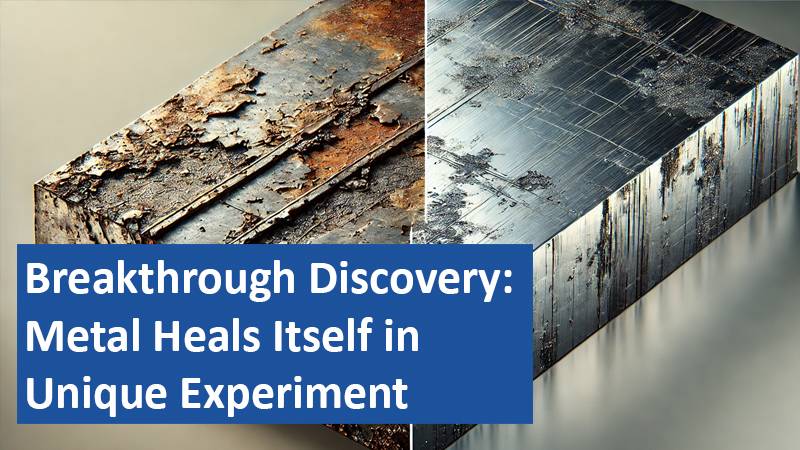In a groundbreaking experiment, scientists observed a metal repairing its own cracks under specific conditions. This phenomenon could potentially transform materials science and engineering applications across industries. The discovery challenges conventional views on metal properties and opens doors to exciting possibilities for self-repairing materials.
By Sadie Watkins
Unexpected Breakthrough in Material Science

A team from Sandia National Laboratories and Texas A&M University made this startling discovery while investigating metal fatigue. Using a high-resolution transmission electron microscope, they applied repeated stress to a thin platinum sample, stretching it 200 times per second. After 40 minutes, researchers were surprised to see a crack within the metal start to mend itself without external intervention. The process repeated with the crack forming in new directions, only to heal again—an unexpected behavior that took the team by surprise.
Potential Impact Across Multiple Industries
If the self-healing capability of metals can be controlled and adapted for practical use, it could significantly impact various sectors. Stronger, self-repairing materials could be used in bridges, engines, and electronic devices, cutting down on maintenance and repair costs. Brad Boyce, a materials’ scientist at Sandia, expressed his enthusiasm over the broad possibilities this discovery could bring to technology and engineering. Such a breakthrough may pave the way for more resilient, sustainable materials that can extend the life cycle of critical infrastructure.
Theoretical Foundations and Early Predictions
While surprising, the concept of self-healing in metals is not entirely new. About a decade ago, Michael Demkowicz, a materials’ scientist at Texas A&M, developed a theoretical model predicting that nanocracks in metals might close under certain conditions. His research suggested that tiny grains within metals could move under stress, leading to self-repairing properties. His involvement in this recent experiment allowed him to validate these predictions through real-world observation, a rare confirmation of his early hypotheses.
Further Investigation into the Mechanism
Scientists are now delving deeper to understand how this self-repairing process operates at the atomic level. One potential explanation involves a phenomenon called cold welding, in which metal surfaces bond under high vacuum, allowing their atomic structures to intertwine. Usually, this only occurs in the absence of air or contaminants, such as in space or a controlled vacuum environment. Whether similar effects can be achieved in traditional metals or under everyday conditions remains a question for ongoing research.
The observation of self-healing metal signals a major advance in materials science, with implications for durability and sustainability in engineering. This development could lead to materials with longer lifespans, reducing environmental impact through less waste and fewer resources needed for repairs. As research into self-healing metals continues, it may herald a new era where materials can autonomously repair damage and enhance their functional longevity.
Based on information from www.dailygalaxy.com and own research.